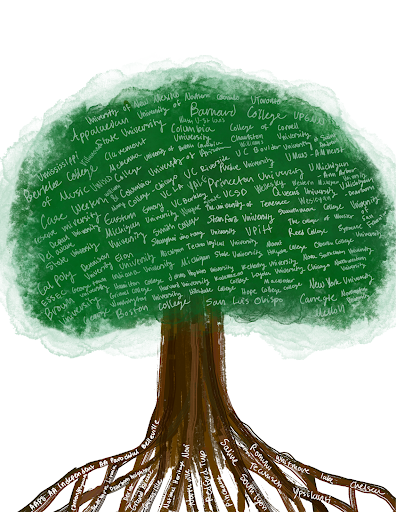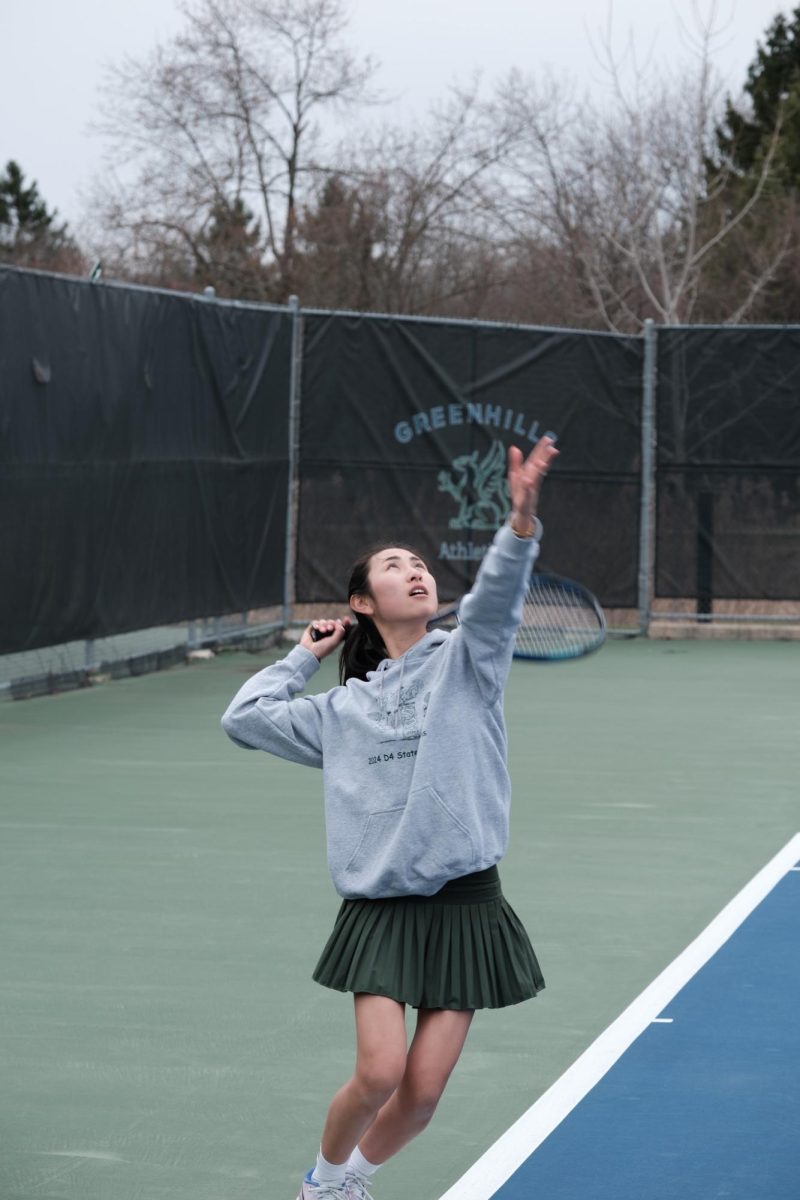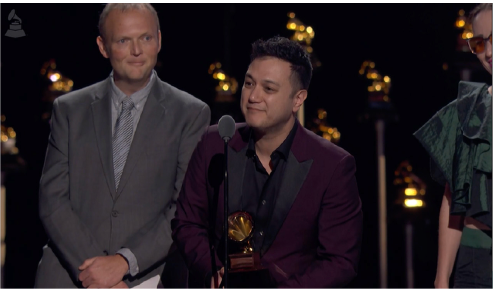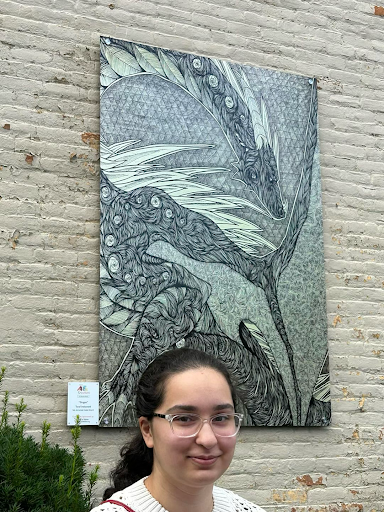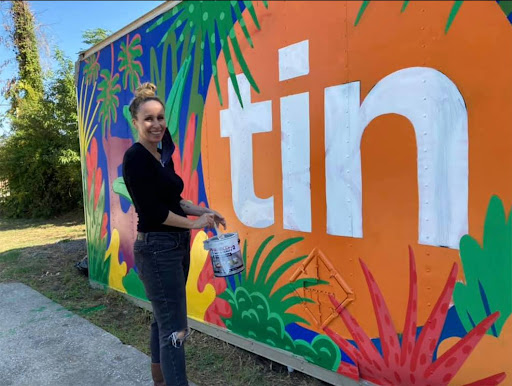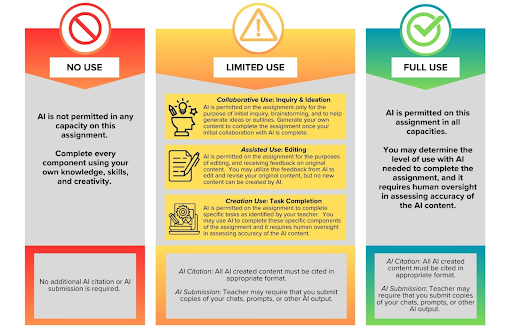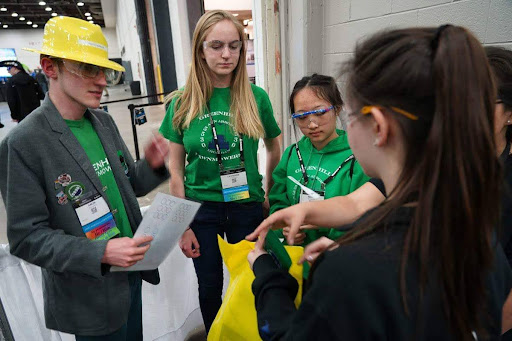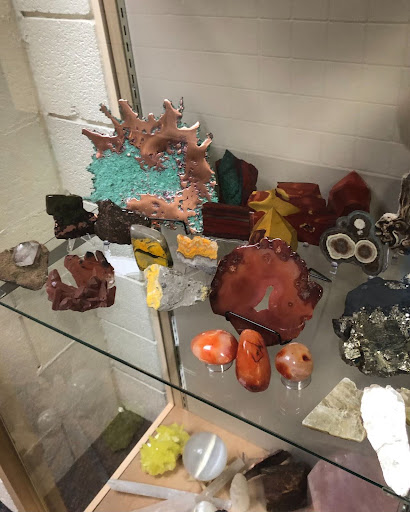In the past few years, one specific innovation has sparked both excitement and concern in classrooms: artificial intelligence (AI). As AI tools like ChatGPT become increasingly accessible, educators grapple with guiding their proper use in schools. In response to these developments, the school has created a new set of AI guidelines as a thoughtful approach to using AI as a helpful tool while maintaining the integrity of academic work.
Director of Teaching and Learning Jenna Goldenberg was especially interested in the rapid development of AI.
“AI is new,” said Goldenberg. “Every school and industry across the country are gaining new knowledge of it and how it’s evolving.”
Goldenberg had seen that students have been using AI more now than ever before and realized that the school needed to adapt to that.
“Last year, if you look in the handbook, there’s a very general, broad policy about AI,” said Goldenberg. “Students were interpreting different messages about AI across classrooms, even in the same classroom. We wanted to establish really clear guidance for all students.”
Goldenberg took it into her own hands to take the most efficient approach to making these new guidelines.
“We created an AI Task Force consisting of one person from each department,” said Goldenberg. “We underwent training through an organization called Atlas, where we got to learn from other teachers and students throughout the nation about the dangers and benefits of AI use in the classroom.”
Goldenberg and the task force ensured that the new guidelines were clear by featuring a chart outlining how students should approach using AI depending on the type of assignment. The guidelines outlined in the handbook are driven by one question: Am I using AI tools safely, critically, and ethically?
One of the most pressing concerns surrounding AI is academic integrity. AI tools, particularly language models like ChatGPT, can easily produce polished essays and research papers, raising fears about plagiarism and the erosion of critical thinking skills.
English teacher Danielle Conti, another member of the task force, expressed her concern about students relying on AI to do their work for them.
“AI can be a wonderful tool, but it can also rob students of the opportunity to struggle through their own ideas and learn how to articulate them,” said Conti. “Writing is about finding your voice, and AI doesn’t have your voice. It can mimic style and generate content, but it can’t replicate your individual thought process.”
For this reason, Conti has adopted a cautious approach to AI in her classes, particularly in assignments where originality is key.
“When students are writing personal essays, I want that to come from their brilliant brains, not ChatGPT,” said Conti. “I don’t want my students outsourcing their thoughts to a machine.”
At the same time, Conti recognizes the potential of AI to enhance student learning. She plans to explore AI’s ability to assist with specific writing tasks.
“It’s about using AI as a tool, not a crutch,” said Conti. “We’re going to explore how AI can help students improve their writing by offering suggestions, but it should never take over the process.”
To ensure students use AI responsibly, the school has recognized the best AI tool for classrooms to be Magic School AI, an educational platform that offers more guardrails than ChatGPT.
“What’s nice about it [Magic School AI] is that our younger students can use it safely,” said Goldenberg.
Maeve Hammond ‘27 has dealt with her peers using AI and appreciates the new guidelines as well.
“I don’t use AI personally, but a lot of my classmates do,” said Hammond. “Before there were guidelines, it was really confusing because some teachers were totally okay with AI, and others weren’t.”
As the school year progresses, both students and faculty expect the AI guidelines to evolve in response to new developments in the technology.
“AI is moving faster than we can keep up with,” said Conti. “What’s important is that we’re staying open to new ideas and remaining flexible. This isn’t the end of the conversation—it’s just the beginning.”



